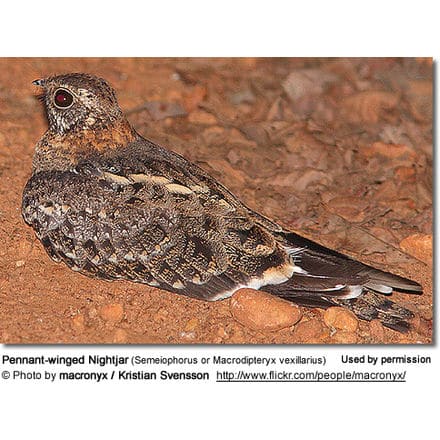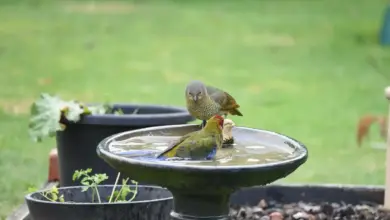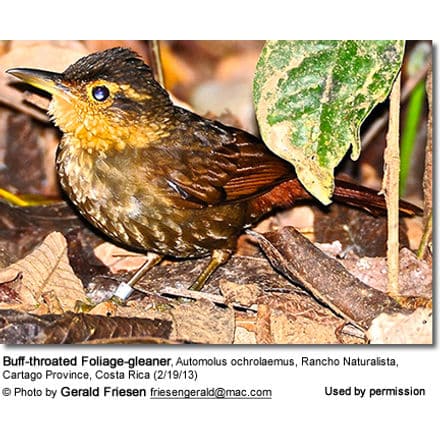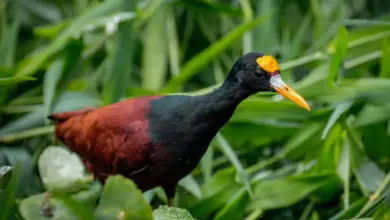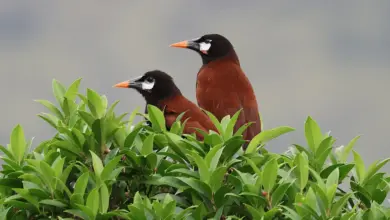Macrodipteryx
The genus Macrodipteryx consists of two African Nightjars that have been named for the strikingly elongated primary wing feathers of the breeding male.
These two species share notable similarities in breeding strategies, roosting and feeding habits, as well as vocalizations. They inhabit subtropical woodlands.
Species
- Standard-winged Nightjar (Macrodipteryx longipennis)
- Pennant-winged Nightjar (Macrodipteryx vexillarius / Semeiophorus vexillarius)
Description
These nightjars are commonly heard within their ranges, but less often seen – due to their nocturnal habits.
Their mostly brown-mottled plumage keeps them well camouflaged during the day, when it is also usually hidden away sleeping. Their cryptic appearance blends perfectly into their habitat and they are very difficult to spot during the daytime, when they are usually hidden away sleeping.
They are most easily detected at night when light from car headlights is reflected ruby-red from their eyes, as they are sitting on tracks or roads. However, their presence is most often made known by their loud calls given at dusk.
Standard-winged vs. Pennant-winged Nightjars:
- Their breeding territories are geographically separated, as the Standard-winged Nightjar
- Macrodipteryx longipennis
- travels southwards to breed in the late northern hemisphere winter, while the Pennant-winged Nightjar breeds in the early southern hemisphere summer.
- The Standard-winged Nightjar has visibly elongated 9th primary flight feathers; however, in the Pennant-winged Nightjar, the 9th primary flight feathers grow to more than twice its body length.
- The primary flight feathers of the females and immature birds are strongly barred in reddish and brown.
- Both have an insect-like call in the breeding season but are quiet when not breeding.
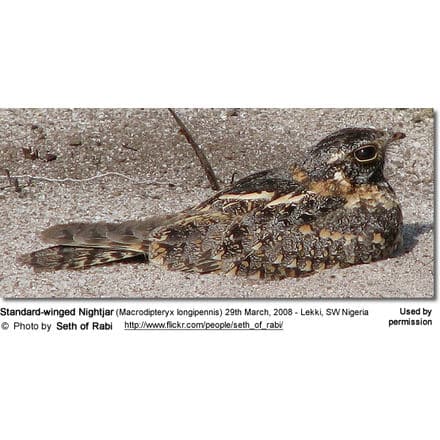
The Feeding Habits of Nightjars / Nighthawks
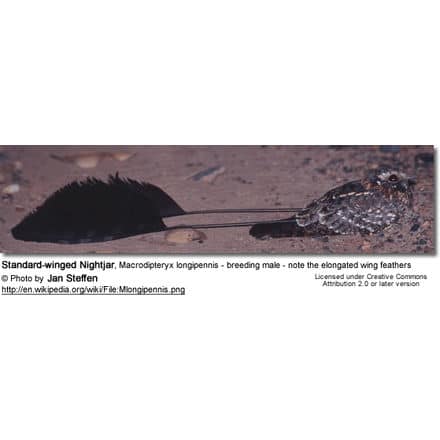
Reproduction / Nesting
The male establishes his territory and sings at night to keep rivals away and at the same time to attract a female.
Nightjars don’t actually construct a nest, as most other bird species do. They simply place the eggs on the ground on open soil covered with dead leaves.
Nesting appears to be timed in such a way that the moon is more than half full at the time they are feeding their young – likely as the additional light during the night facilitates caring for the young and foraging for food.
The female may lay one to two eggs (mostly two) that are creamy in color, with brown and grey spots or blotches.
During the day, the incubation of the eggs is undertaken by the female, while both parents share the incubation at night. The incubation period is about 19 to 21 days.
The hatchlings are covered in down and are capable of short-distance movements within 24 hours of hatching. They usually move apart shortly after hatching, maybe to make it more difficult for predators to spot them. The parents also shove them apart with their feet as they flush from the nest. The male usually stands guard and defends the nest and the young. He will hover in place near the nest with his body in a nearly vertical position and his tail spread. The adults communicate with their young via soft clucking sounds to which the chicks respond.
Both parents feed the young regurgitated food (insects), and they continue to brood them until they fledge. The young take their first flight when they are about 20 to 21 days old.
If conditions are favorable, the female may lay a second clutch close to the first and while she is incubating the new set of eggs, the male continues to care for the young from the first brood.
They have developed several behavioral adaptations to minimize predation:
- Their nocturnal (night) lifestyle reduces the likelihood of being detected by daytime predators. During the daytime, they typically sleep on the ground where they are perfectly camouflaged by their “earthy” colored plumage. They almost always change their roost sites on a daily basis.
- When nesting, they sit quietly on the eggs, minimizing any movements that could get them detected.
- If an intruder does get close to the nest, the parents may try to lead them away by first flushing off the nest and when landing feigning injury as they lead the potential thread away from the nest. While the parent performs this distraction display, the young may scatter and freeze.
- The parent who is not incubating the eggs or brooding the young will roost away from the nesting area.
- They may also move the eggs or young to prevent them from being preyed upon.
Nightjars avoid voicing when they hear the calls made by predatory nocturnal animals, such as owls.
